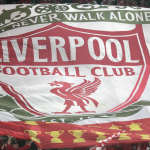YOU don’t need goals to enjoy football. Test this theory the next time you hear an England or Ireland fan fondly recalling their country’s exploits at the 1990 World Cup by leaning in and saying “actually, this was the lowest scoring World Cup in the competition’s history,” while pushing some imaginary glasses up your nose.
It’s true, the matches at Italia 90 saw only 2.21 goals per game but if your team went incredibly far on its debut (Ireland) or rescued the entire sport as a national pastime (England) then it really doesn’t matter. So how will people of the future view the 2020-21 Premier League season if it continues at its current outlandish rate of 3.6 goals per game? Well, a) it would at last add a flourish to an already heavily asterisked campaign, and b) it really, probably, won’t.
There are very few certainties in life or football these days but one thing we can place our faith in is the long-term truth offered by models like Expected Goals. Ok, for individual shots and single games it might not tell the whole story but for a larger number of games you can’t outrun its conclusions. The bare facts are these: England’s top division is currently on course to have its first season with a goals-per-game rate of above 3 since 3.03 in 1967-68, and if it ended on 3.58 like it is right now, it would be the highest rate since 1960-61, often cited (often by Tottenham fans for understandable reasons), as one of the finest seasons in the game’s history.
A certain Charles Reep was fully operational in the early 1960s, writing in a magazine before the 1962 World Cup that “British observers [have] been deceived for years by too readily accepting the assurances that “Continental style” football is superior to the English direct style”. British exceptionalism writ large, some things stay the same.
A) Charles Reep 1962
B) Pep Guardiola 2018 pic.twitter.com/6Lih6WQuWc— Duncan Alexander (@oilysailor) November 12, 2018
For all Reep’s data collection back then, he didn’t have the range of information or the technological capabilities to create something like the Expected Goals model. Maybe the sheer number of goals in the 1960s tricked Reep into thinking they would never stop. The goal tap was seemingly jammed open, yet by 1970-71 the English top-flight was experiencing its lowest scoring season to date, with just 2.36 goals per game. Reep’s dream of English stylistic dominance were over and England did not play a single World Cup finals game between 1970 and 1982.
The point of that diversion into the sport’s history is that a high (or low) goals per game rate isn’t necessarily the sign of a radical shift in the direction the sport is headed, it can just be a freak season. Such has been the sheer unusualness of 2020 that it is tempting to point to things like empty stadiums and VAR decisions as reasons why the goals have flowed, but instead the underlying numbers are shouting one thing: it’s just an odd moment in an odd year.
Look at the graphic below showing goals per game and Expected Goals per game in each of the big five leagues this season. That gap between the two in the Premier League is vast, with almost an additional goal per game in the English division. In chance quality terms, the Premier League is roughly level with Ligue 1, yet has seen a lot more goals. The Bundesliga is once again above three goals per game but this is roughly level with the xG per game. Serie A, meanwhile, is somewhere between those two extremes.
All three divisions (England, Italy, Germany) could end with a goals-per-game rate above 3.0 but the underlying trends suggest that it is England’s top-flight that will tail off sooner or later. No-one enjoys a spoiler, but there it is all the same.
Looking at this Premier League season more closely, a lot of the overperformance described above came in Matchweek Two and Matchweek Four with an xG overperformance of +14 and +13.5 respectively. They sound like big numbers and they are: no other rounds of Premier League games in the era we have this data for come close.
Lovers of simple patterns may note that MD6 comes this weekend and so perhaps after two and four, six will once again see unlikely players scoring unlikely amounts of goals from unlikely positions.
But sadly, unlike Reep, we can only react to what the data tells us, not shape it to our own belief system. The goals, how we love them, but the goals, how they will slow. Sorry, but it’s true.





